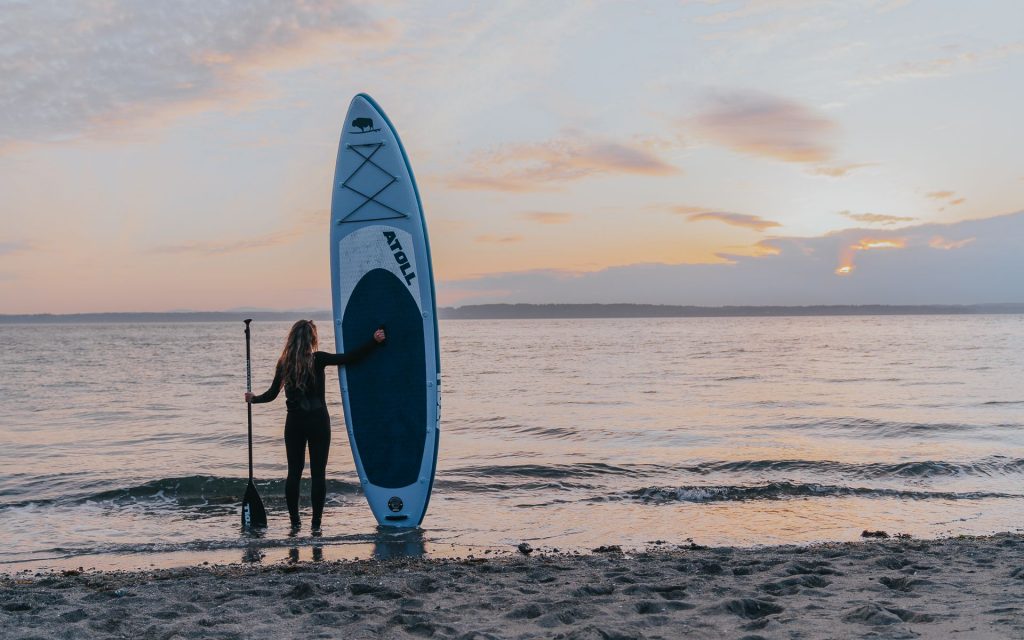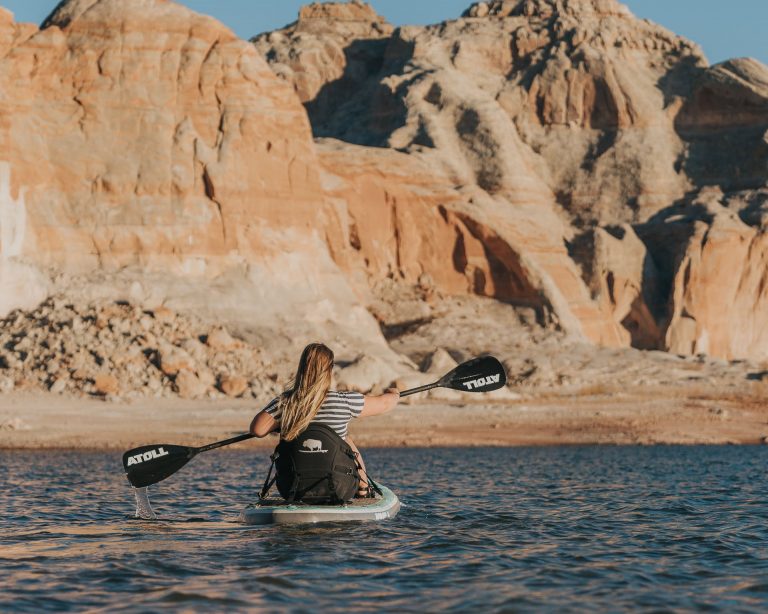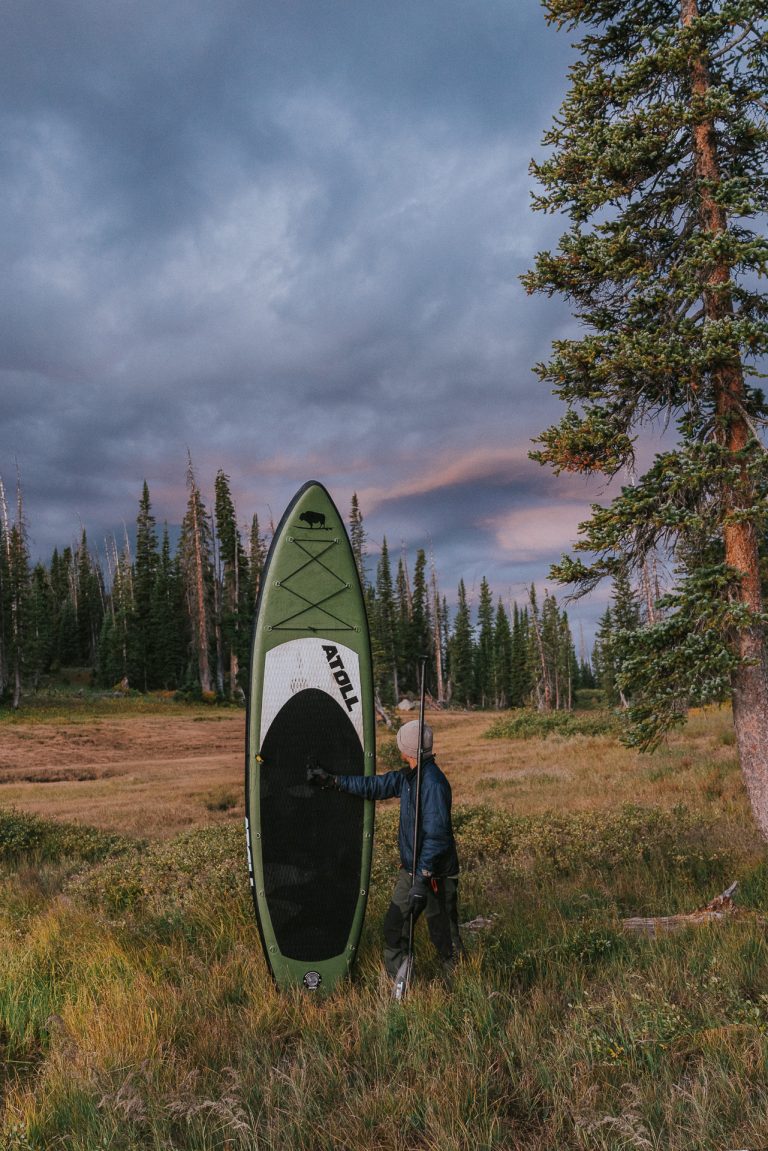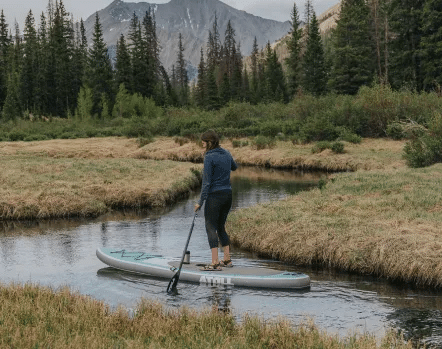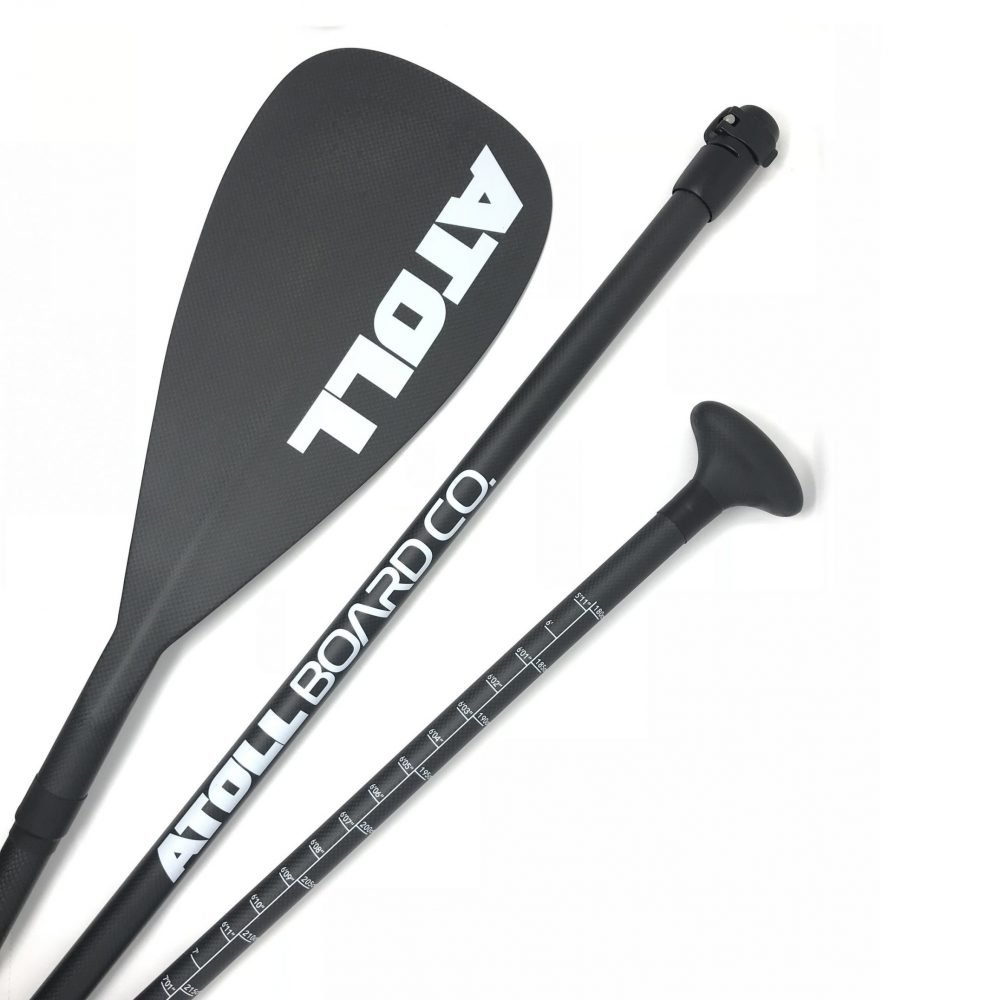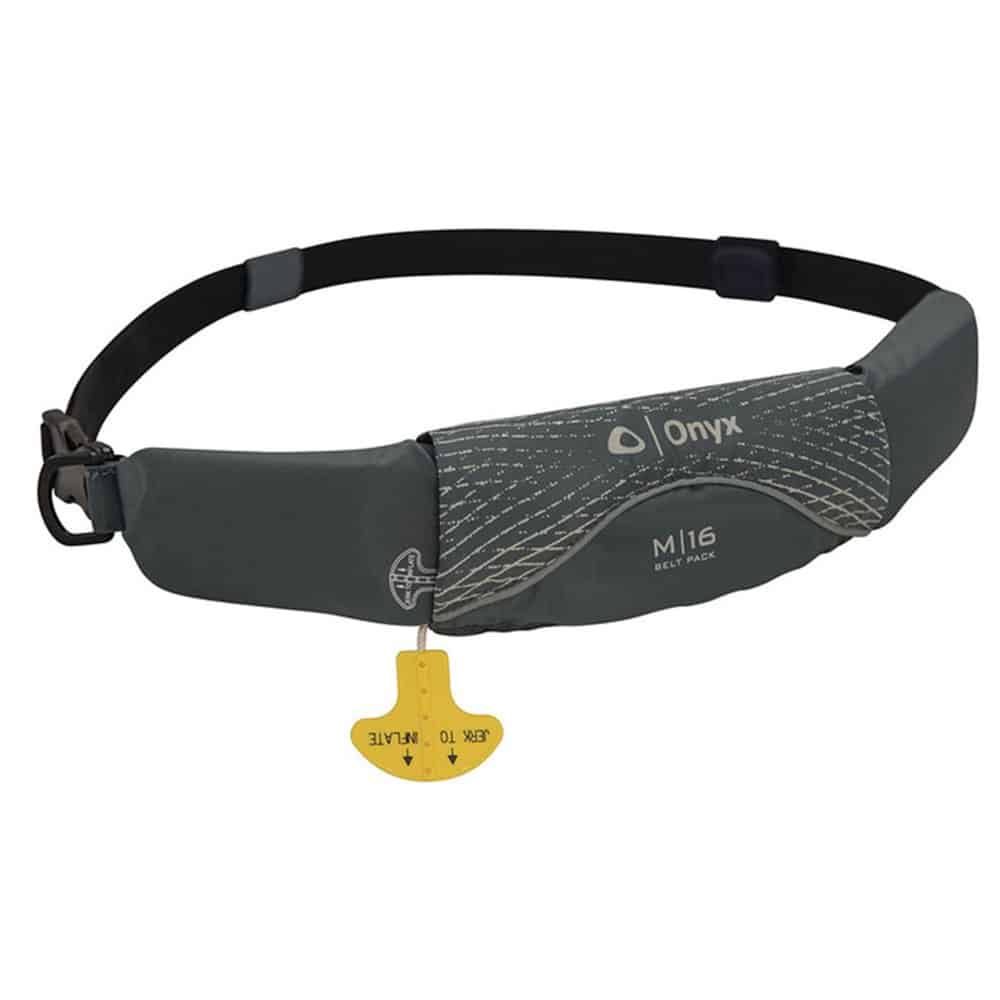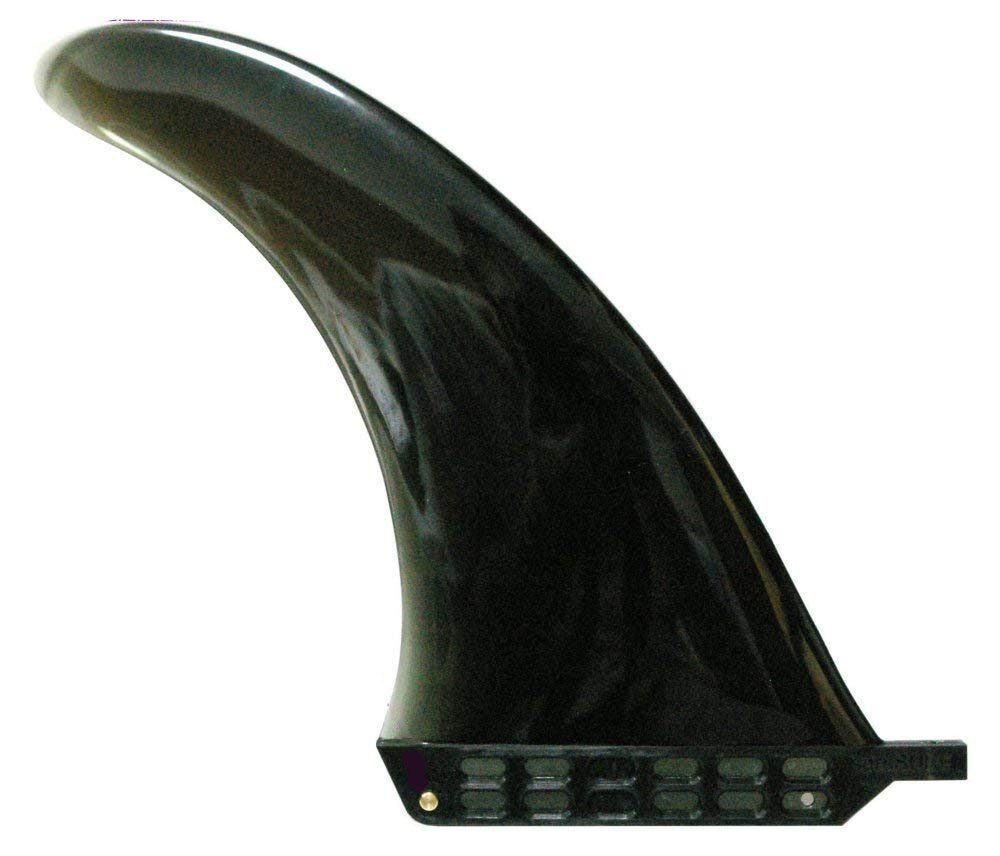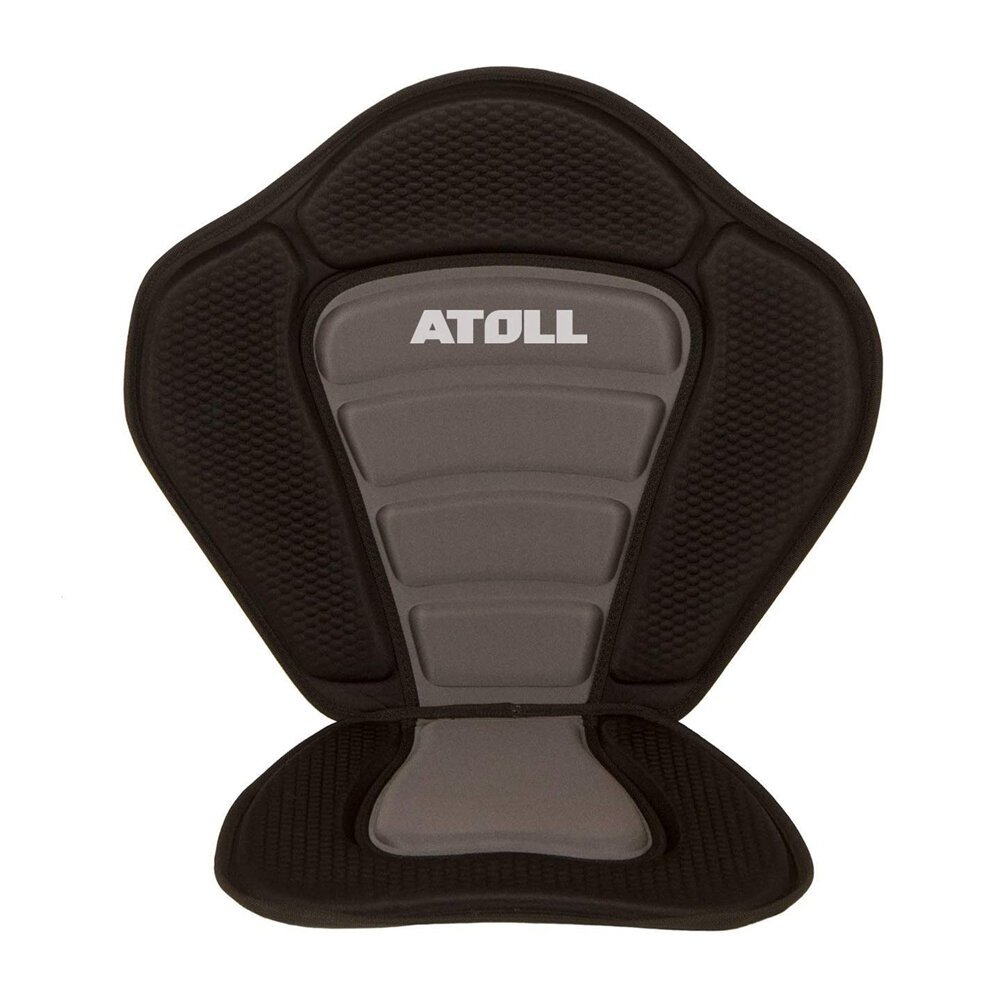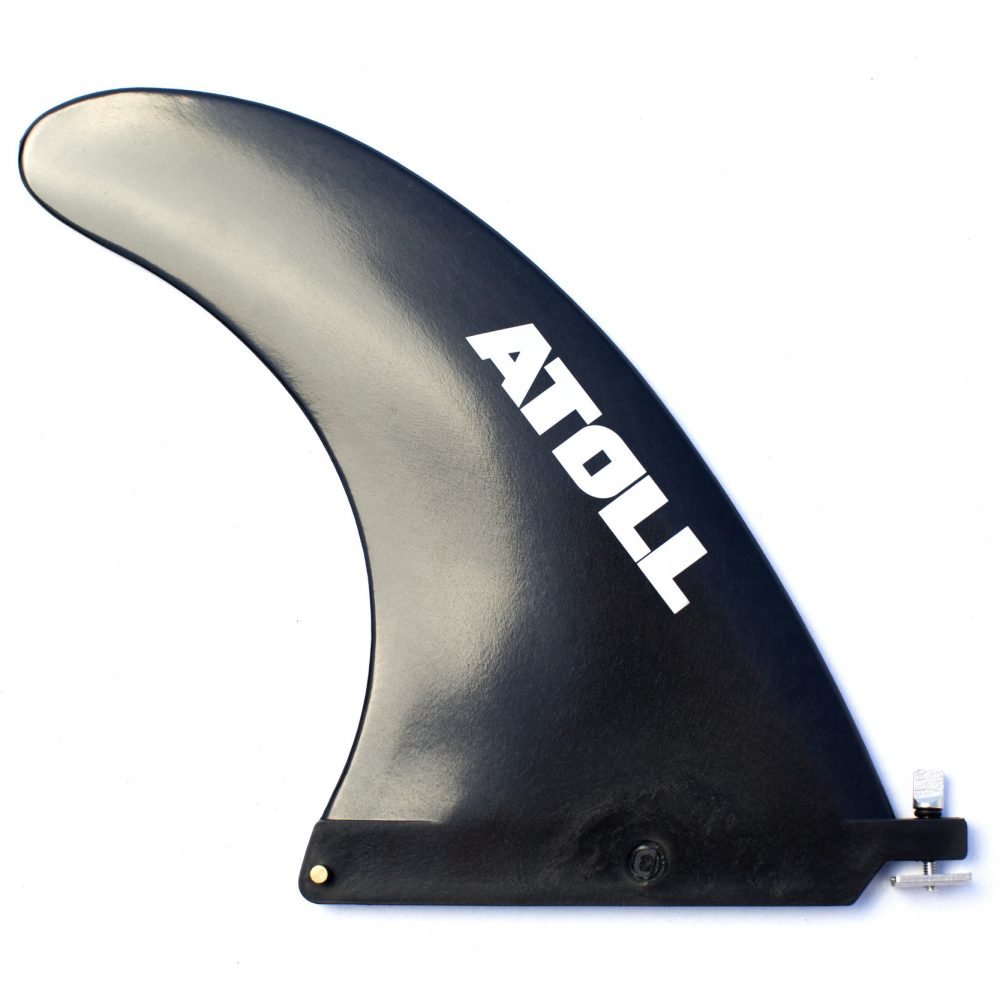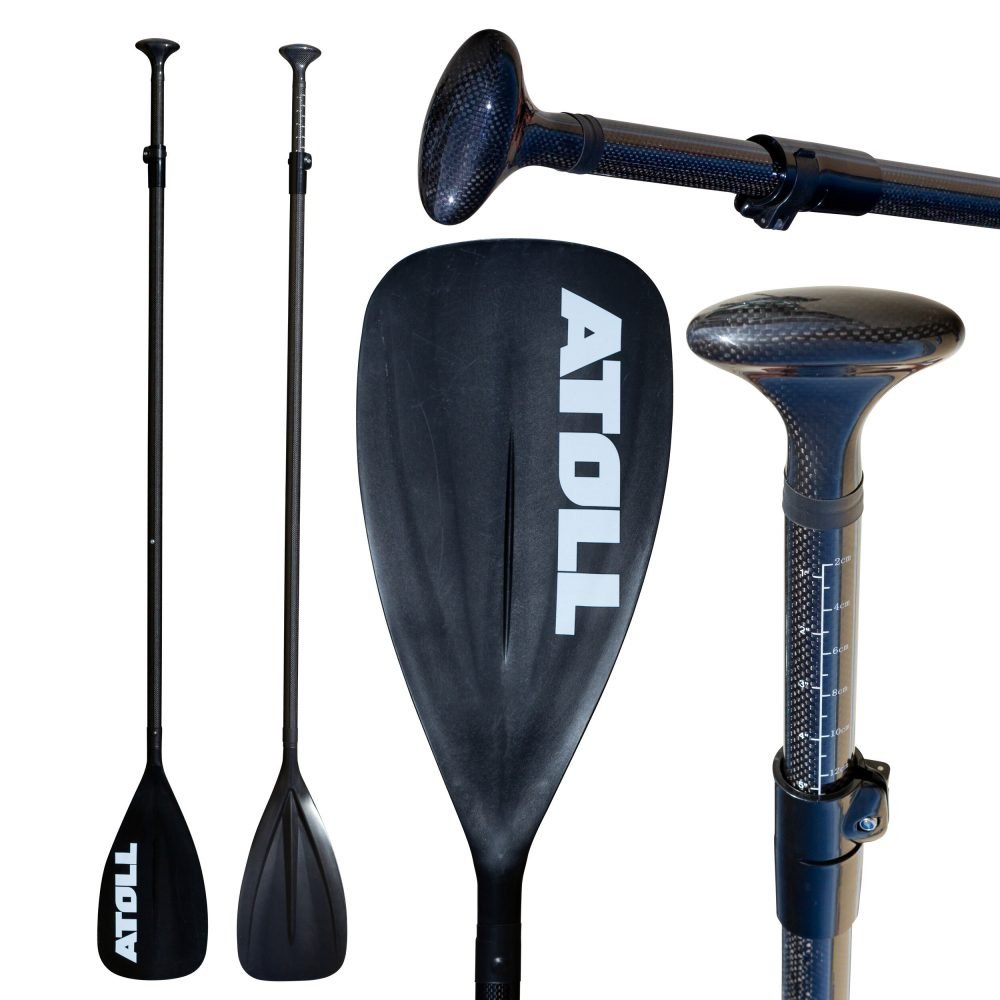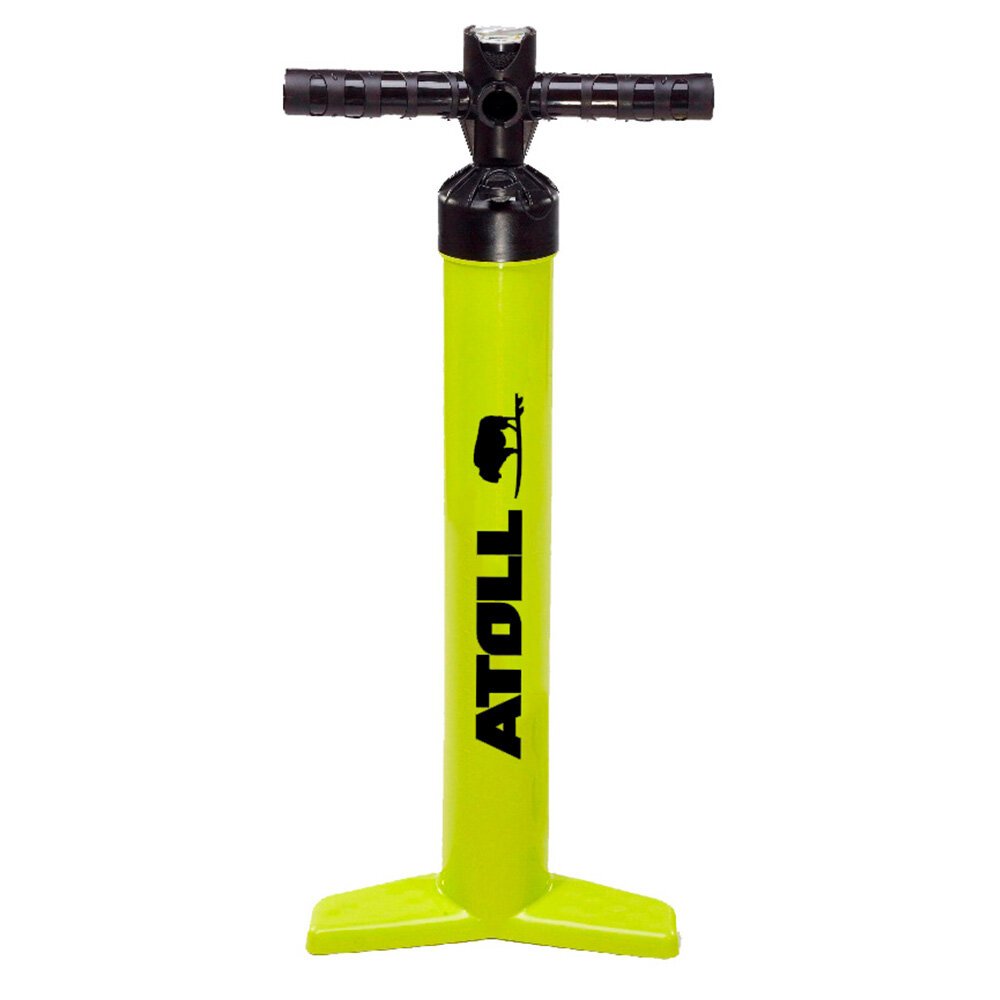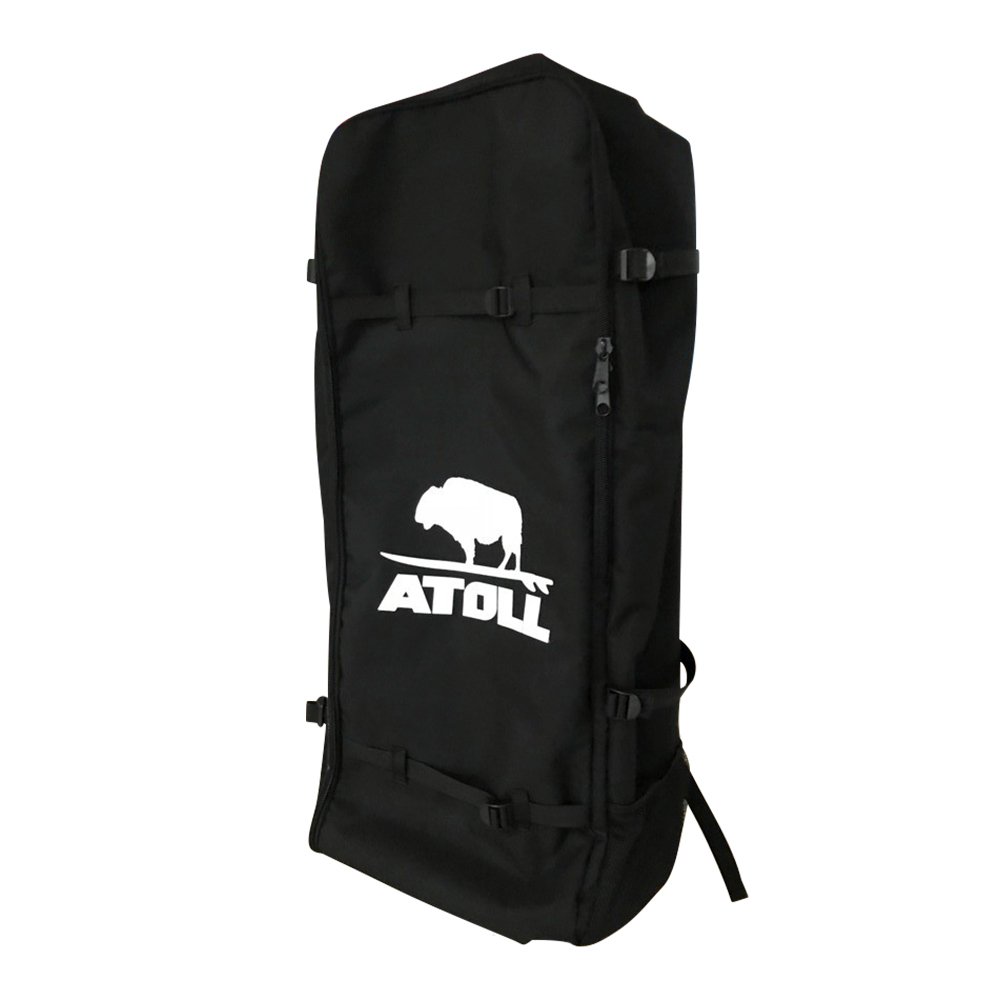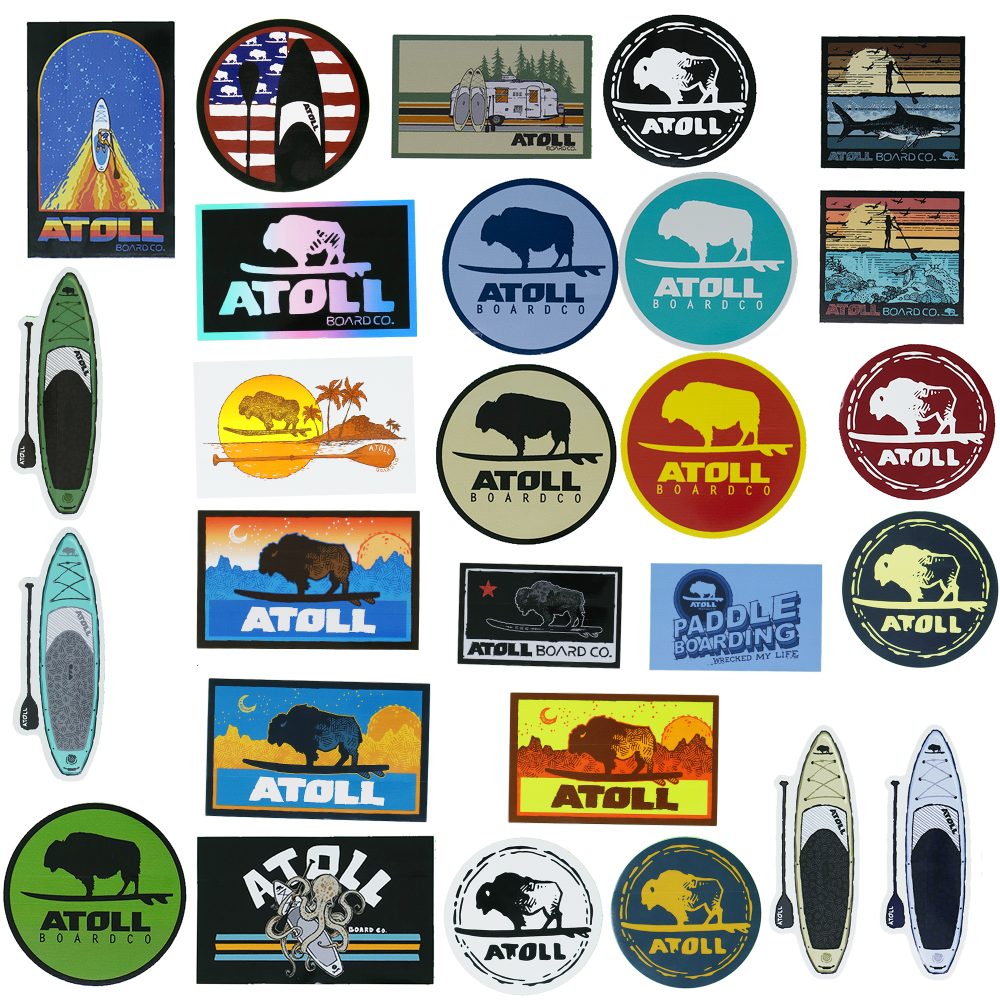If you want to improve your skills, there is one SUP skill that you should learn and practice the next time you’re on the water. Find out what it is and how to practice it below!
___________
Are you ready to make the jump from beginner to intermediate paddler? If so, there are a few skills you need to learn in order to get there.
They aren’t flashy. And they certainly won’t make anyone think you’re some kind of paddling virtuoso. But when mastered they will help you stay upright in the wind or in a wake. They’ll put you in the right position to turn your Paddle board with ease. And help you use your paddle in a way that will better control your board at all times.
Ready to find out what they are and practice them the next time you’re on the water? Let’s go to it!
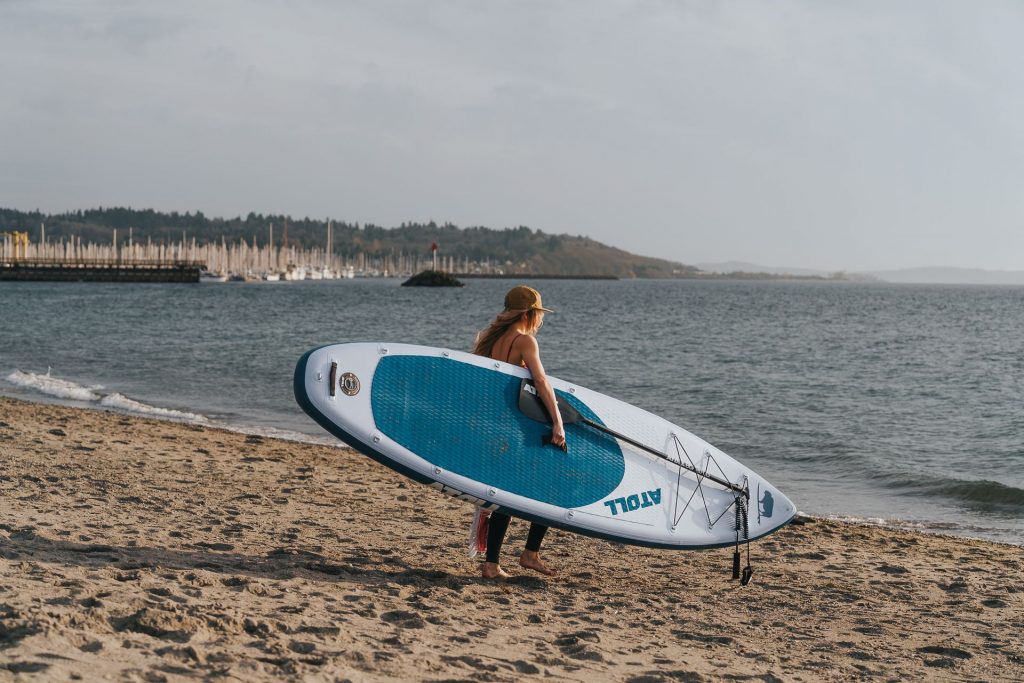
SUP Skill #1: Draw Stroke
The first skill you need to practice is a draw stroke.
This type of paddle stroke is used to pull your board sideways and comes in handy when pulling up to a dock when you’re ready to get back on land. And it helps you to move in a horizontal movement instead of trying to turn the nose of your board.
There are two different types of draw strokes…
Sculling and regular.
First, let’s start with regular.
To begin, start in a normal or staggered stance (more on that in a bit). Then, place your blade in the water on the side of your board with the blade parallel to the rail. It should line up with your feet.
Then, submerge your blade with the angle facing away from you. Once in place, pull the blade back toward your feet moving your board closer to where your blade was in the water. With this stroke, your board should move sideways.
Now, when it comes to a sculling draw stroke, you start out the same. But instead of placing your paddle in the water, pulling it back towards you, taking it out of the water, and repeating the process…
You keep the blade submerged the entire time and in one continuous motion, move the blade back and forth, almost like spreading butter on bread. This is sometimes a quicker way to move your board side-to-side compared to a regular draw stroke.
Both of these motions will move your board sideways. Sometimes it can be subtle, but when you are getting near a dock or other landing spot and you need to step off the side of your board back onto land, it’s much better to use a draw stroke to pull your board closer to the dock instead of heading nose first.
Give it a shot the next time you’re on the water and let us know how it works for you!
SUP Skill #2: Stances
Next, let’s discuss a new SUP skill – stances. A certain stance can come in handy when participating in different activities on your board.
Neutral/Normal
The neutral stance is your normal stance on the board – feet hip-width apart, facing forwards, with the board handle right in between your feet. This is the stance you will use 99% of the time when paddling. One thing to remember here – make sure to put a slight bend in your knees into a more athletic stance in order to increase your balance.
Staggered
Your staggered stance is primarily used along with your draw stroke (see above).
It’s also a useful stance for paddling on one side if you’re in a side wind or headwind.
To execute a staggered stance, take a step back with your leashed foot and turn your toes to a 45-degree angle to the rail you are facing. This stance provides a stable base while opening yourself up to paddle on one side only.
Hybrid
As the name implies, a hybrid stance is a combination of your staggered and normal stance. Instead of going all the way into a staggered stance, take a step back with your leashed foot only slightly, keeping your front foot facing forward.
This stance is great if you want to make a quick turn because it releases the nose of the board slightly from the water. Plus, the more weight you put on your back foot the higher the nose will lift. It’s also a great way to paddle through chop, waves, or whitewater – especially if you are paddling into the ocean.
Surf
A surf stance is used when you’re surfing – of course! To step into a surf stance you first need to know if you are a goofy foot or a regular foot.
Goofy-footed paddlers have their left foot back and their right foot forward. While regular-footed paddlers have their right foot back and their left foot forward.
Once you know which stance is comfortable, come into an athletic stance, then take your leashed foot and step back toward the tail.
If it helps, you can imagine a line running down the center of the board from nose to tail. And unlike a staggered stance where you are off the center line, in a surf stance, you want to hit the center line as much as possible.
Use this stance when you’re trying to catch some waves at the beach!

The Most Underrated SUP Skill: Bracing
Now that we covered different stances and how to use a draw stroke let’s go over the most underrated balance skill a paddler can learn – bracing.
Mastering this technique will allow you to remain upright on your board through wind, wakes, and even waves.
For most beginner paddlers, when they feel shaky on their board, the natural tendency is to pull the paddle out of the water and try to remain still until the movement underneath the board has ceased.
But to master bracing, you have to do the opposite. Instead of pulling your paddle out of the water, use the front face of your paddle to keep you upright by slapping the water on the side of your board or in front.
By hitting the water with your blade, it provides a solid surface to catch yourself if you feel like you might be losing your balance.
If there was one skill we recommend you practice out of the few above, we suggest bracing. By understanding how to use your paddle in this way, you’ll be able to stay upright even through the worst chop.
If you need a video demonstration of this skill, check out this quick one here.
Conclusion
We hope this short breakdown of intermediate SUP skills will serve you the next time you’re on the water. Of course, if you need any help or clarifications, or if you have any questions, feel free to reach out! And until next time, be sure to adventure on.


